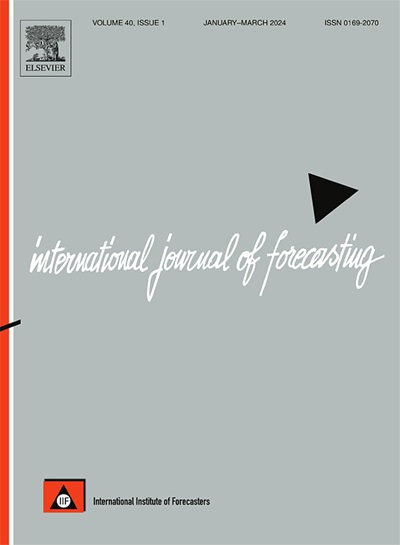对金融市场投资时用于预测的模型和方法的调查
IF 7.1
2区 经济学
Q1 ECONOMICS
引用次数: 0
摘要
Makridakis M6金融双人竞赛建立在先前的m竞赛的基础上,该竞赛通过评估金融市场中的投资决策来关注随机变量的点和概率预测的属性。特别是,M6竞赛评估与大量金融时间序列变量分析相关的预测和投资结果。考虑到在做出投资决策时回报和风险预测的重要性,在这种情况下,一个自然的问题是,哪种方法和模型可用于上述预测,并被竞赛参与者使用。在本调查中,我们讨论了这些方法和模型,特别关注金融时间序列预测的构建,使用为离散和连续时间设置设计的方法,并使用小型和大型(高维和/或高频)数据集。例子涵盖了从简单的随机游走型回报模型到参数GARCH和预测波动率(风险)的非参数综合波动率方法。我们还提出了一个新颖的实证说明的结果,强调了预测财务回报的困难,即使使用所谓的大数据。本文章由计算机程序翻译,如有差异,请以英文原文为准。
A survey of models and methods used for forecasting when investing in financial markets
The Makridakis M6 Financial Duathalon competition builds on prior M-competitions that focus on the properties of point and probabilistic forecasts of random variables by also evaluating investment decisions in financial markets. In particular, the M6 competition evaluates both forecasts and investment outcomes associated with the analysis of a large group of financial time series variables. Given the importance of return and risk forecasting when making investment decisions, a natural question in this context concerns what sorts of methods and models are available for said forecasting and were used by participants of the competition. In this survey, we discuss such methods and models, with a specific focus on the construction of financial time series forecasts using approaches designed for both discrete and continuous time setups and using both small and large (high dimensional and/or high frequency) datasets. Examples covered range from simple random walk-type models of returns to parametric GARCH and nonparametric integrated volatility methods for forecasting volatility (risk). We also present the results of a novel empirical illustration that underscores the difficulty in forecasting financial returns, even when using so-called big data.
求助全文
通过发布文献求助,成功后即可免费获取论文全文。
去求助
来源期刊

International Journal of Forecasting
Multiple-
CiteScore
17.10
自引率
11.40%
发文量
189
审稿时长
77 days
期刊介绍:
The International Journal of Forecasting is a leading journal in its field that publishes high quality refereed papers. It aims to bridge the gap between theory and practice, making forecasting useful and relevant for decision and policy makers. The journal places strong emphasis on empirical studies, evaluation activities, implementation research, and improving the practice of forecasting. It welcomes various points of view and encourages debate to find solutions to field-related problems. The journal is the official publication of the International Institute of Forecasters (IIF) and is indexed in Sociological Abstracts, Journal of Economic Literature, Statistical Theory and Method Abstracts, INSPEC, Current Contents, UMI Data Courier, RePEc, Academic Journal Guide, CIS, IAOR, and Social Sciences Citation Index.
 求助内容:
求助内容: 应助结果提醒方式:
应助结果提醒方式:


